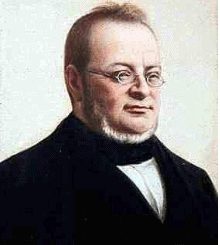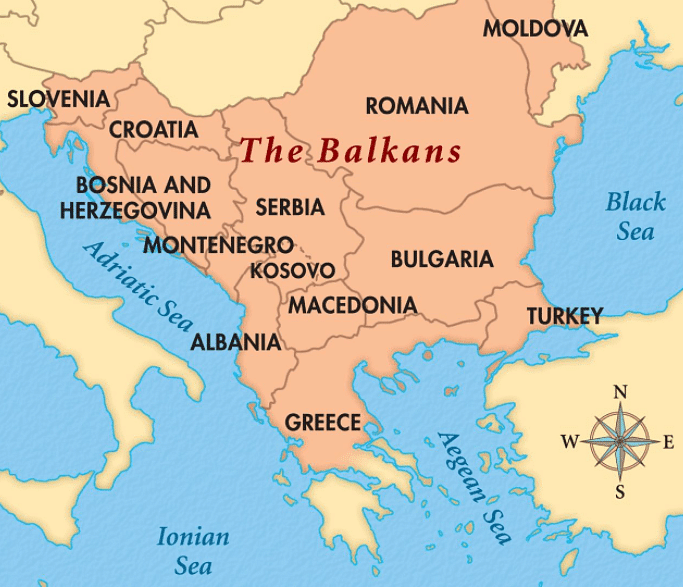NCERT Solutions for Class 10 History Chapter 1 - The Rise of Nationalism in Europe
Q1. Write a note on:
(a) Giuseppe Mazzini
(b) Count camillo di cavour
(c) The Greek war of independence
(d) Frankfurt Parliament
(e) The role of women in nationalist struggles
Ans:
(a) Giuseppe Mazzini (1807-1872)

- Giuseppe Mazzini was an Italian politician and revolutionary born in Genoa in 1807. At 24, he was exiled for trying to start a revolution.
- He later founded two secret groups: Young Italy and Young Europe.
- Mazzini believed that nations were meant to be natural units of humanity.
- Even though he didn't reach his goals, he sparked a strong sense of love for his country and is seen as an important person in bringing Italy together.
(b) Count Camillo di Cavour
 Count Camillo di Cavour
Count Camillo di Cavour
- He was the chief minister of Sardinia-Piedmont state and led the movement to unify Italy.
- He was neither a revolutionary nor a democrat.
- Like many other wealthy and educated members of the Italian elite, he spoke French better than Italian.
- He formed a diplomatic alliance with France, which helped Sardinia-Piedmont defeat the Austrian forces in 1859, freeing northern Italy from the Austrian Habsburgs.
(c) The Greek War of Independence Greek war of Independence
Greek war of Independence
- The Greek War of Independence in 1821 sparked nationalist feelings across Europe.
- Greece, under the Ottoman Empire since the 15th century, aimed to expel the Turks and revive the Greek Empire.
- Supported by Greeks in exile and Western European nations, poets and artists praised Greece, rallying support. Lord Byron even raised funds and joined the fight.
- Greece’s independence was recognized by the Treaty of Constantinople in 1832, guaranteed by Russia, England, and France.
(d) Frankfurt Parliament Frankfurt Parliament
Frankfurt Parliament
- In Germany, groups of middle-class professionals, businessmen, and artisans came together to form an all-German National Assembly.
- Their first meeting was held on May 18, 1848, at the Church of St. Paul in Frankfurt, where 831 elected members gathered.
- They created a constitution for a German nation that would be led by a king under a parliament.
- However, when they offered the crown to Friedrich Wilhelm IV, the King of Prussia, he refused it, and he, along with other kings, opposed the assembly.
(e) The role of women in nationalist struggles
- Artistic depictions of the French Revolution show men and women participating equally, with Liberty symbolized as a woman.
- Influenced by liberal nationalism and the idea of universal suffrage, women took active roles in political associations, started newspapers, and joined demonstrations.
- In France, around sixty women’s clubs were formed, including the prominent Society of Revolutionary and Republican Women, which demanded equal political rights.
- However, they were denied suffrage in the Assembly elections.
Q2. What steps did the French revolutionaries take to create a sense of collective identity among the French people?
Ans:
- The ideas of fatherland (la Patrie) and citizen (le Citoyen) were introduced in France.
- The tricolour flag replaced the royal standard, and the Estates-General was renamed the National Assembly.
- New hymns, oaths, and commemorations were created in the name of the nation.
- A centralized administrative system was set up with uniform laws for all citizens.
- Internal customs duties were abolished, and a uniform system of weights and measures was adopted. French from Paris became the common language, with regional dialects discouraged.
- France aimed to liberate Europe from despotism and help others become nations.
Q3. Who were Marianne and Germania? What was the importance of the way in which they were portrayed?
Ans:
- In the 18th and 19th centuries, artists used female figures as allegories of nations.
- In France, Marianne symbolized the nation, representing liberty and the Republic with the red cap, tricolor, and cockade. Statues of Marianne were placed in public squares, and her image appeared on coins and stamps to promote national unity.
- Similarly, Germania represented the German nation, depicted with a crown of oak leaves symbolizing heroism.
- These portrayals aimed to remind the public of their national symbols and encourage identification with them.
Q4. Briefly trace the process of German unification.
Ans:
- In 1848, middle-class Germans aimed to unite the German confederation into a nation-state with an elected parliament.
- They were suppressed by the monarchy, military, and Prussian landowners. Prussia then led the unification movement, with Otto von Bismarck as its main architect.
- Through three wars over seven years—with Austria, Denmark, and France—Prussia achieved victory and completed unification.
- In January 1871, King William I of Prussia was proclaimed German Emperor at a ceremony in Versailles.
Q5. What changes did Napoleon introduce to make the administrative system more efficient in the territories ruled by him?
Ans:
- In 1804, he established the Civil Code (or Napoleonic Code), which abolished privileges based on birth, ensured equality before the law, and protected the right to property.
- He simplified administrative divisions, ended the feudal system, and freed peasants from serfdom and manorial dues.
- In towns, the guild system was removed, and transport and communication systems were improved.
- Workers, peasants, artisans, and new businessmen enjoyed newfound freedoms.
- Uniform laws, standardized weights, and a common currency made it easier to move and trade goods and capital.
Q6. Explain what is meant by the 1848 revolution of the liberals. What were the political, social and economic ideas supported by the liberals?
Ans: The 1848 revolution of the liberals:
- The 1848 revolution was led by the educated middle classes along with the poor, unemployed starving peasants and workers in Europe.
- In certain parts of Europe such as Germany, Italy, Poland, and the Austro-Hungarian Empire, men and women of the liberal middle classes came together to push their demands for the creation of nation-states based on parliamentary principles.
The political, social and economic ideas supported by the liberals were:
(i) Politically, they demanded constitutionalism with national unification. They wanted the creation of a nation-state with a written constitution and parliamentary administration.
(ii) Socially, they wanted to rid society of its class-based partialities and birthrights. Serfdom and bonded labor had to be abolished.
(iii) Economically, they wanted freedom of markets and the right to property, abolition of state-imposed restrictions on the movements of goods and capital.
Q7. Choose three examples to show the contribution of culture to the growth of nationalism in Europe.
Ans: Examples of how culture contributed to the growth of nationalism in Europe:
(i) Romanticism
- This European movement aimed to foster national unity by emphasizing shared heritage and common history.
- Romantic artists used emotions, intuition, and mystical feelings to promote national sentiments.
(ii) Folk Songs, Dances, and Poetry
- These elements spread the spirit of nationalism and patriotism. Folk culture, integral to people's lives, helped convey nationalist messages widely.
- For instance, Polish composer Karol Kurpinski used folk dances in his music to support the Polish nationalist struggle.
(iii) Language Association
- Language played a crucial role in nationalism. For example, during Russian occupation, speaking Polish became a symbol of resistance against Russian dominance.
- After the 1831 rebellion, Polish clergy used the Polish language in Church gatherings and religious instructions to oppose the imposition of Russian.
Q8. Through a focus on any two countries, explain how nations developed over the nineteenth century.
Ans: We would be taking Germany and Italy as our two examples:
(i) Germany
- Nationalist sentiments were often used by conservatives to promote state power and achieve political dominance in Europe, as seen in the unification of Germany and Italy.
- Middle-class Germans tried to unite the German Confederation, but their efforts were thwarted by the Junkers of Prussia. After three wars with Austria, Denmark, and France, Prussia emerged victorious. In January 1871, King William I of Prussia was proclaimed German Emperor.
- Modernizing the currency, banking, and legal systems in Germany was a key focus during this period.
(ii) Italy
- During the 1830s, Mazzini sought to unify Italy. He had formed a secret society called ‘Young Italy’, and it had failed. Hence, the responsibility fell on Sardinia-Piedmont under its ruler King Victor Emmanuel II, to unify Italian states through war.
- Austrian forces were defeated in 1859. Apart from Sardinia-Piedmont, a large number of volunteers had joined the cause under the leadership of Giuseppe Garibaldi. In 1860, they marched to South Italy and managed to defeat Spanish rulers. In 1861, Victor Emmanuel II was proclaimed as the king of Italy.
Q9. How was the history of nationalism in Britain unlike the rest of Europe?
Ans: The history of nationalism is Britain was different as follows:
- Before the 18th century, the British Isles housed diverse ethnic groups.
- The main groups included the English, Welsh, Scots, and Irish. Each ethnic group had its own traditions.
- England's wealth and power allowed it to dominate the others.
- National symbols such as the English language, flag, and anthem were promoted. This promotion aimed to forge a British identity.
- While France’s nationalism arose from revolutions, Britain's evolved gradually.
- Britain's nationalism developed through Parliamentary Acts rather than wars.
- In 1688, the British Parliament curtailed monarchical power through bloodless revolutions.
- The Act of Union (1707) united England and Scotland.
- British nationalism emerged through elite decisions. English culture often overshadowed Scottish traditions.
Q10. Why did nationalist tensions emerge in the Balkans?
Ans: Nationalist tensions emerge in the Balkans because:
- Nationalism: Tensions in the Balkans rose as people aspired to nationalism. In the 19th century, much of the Balkans was under Ottoman rule, which failed to modernize effectively.

- Ethnic Variation: The Balkans, including present-day Romania, Bulgaria, Albania, Greece, and others, was ethnically diverse, mainly inhabited by Slavs.
- Disintegration of the Ottoman Empire: As the Ottoman Empire declined, the rise of romantic nationalism made the Balkans unstable.
- Subjugation: Newly independent Balkan states faced foreign domination, with historical claims used to justify their independence struggles.
- Jealousy: Balkan states, envious of each other, sought territorial expansion, leading to increased conflict and intolerance.
- Power Struggle: European powers like Russia, Germany, and Britain competed to expand their influence, aiming to limit rivals and extend their control over trade, colonies, and military power.
|
63 videos|445 docs|87 tests
|
FAQs on NCERT Solutions for Class 10 History Chapter 1 - The Rise of Nationalism in Europe
| 1. What were the main causes of the rise of nationalism in Europe during the 19th century? |  |
| 2. How did the French Revolution influence nationalist movements in Europe? |  |
| 3. What role did the unification of Germany and Italy play in the rise of nationalism? |  |
| 4. What were the impacts of nationalism on the European political landscape? |  |
| 5. How did art and culture contribute to the rise of nationalism in Europe? |  |

|
Explore Courses for Class 10 exam
|

|













